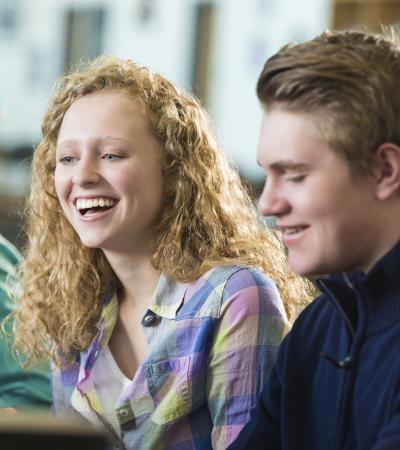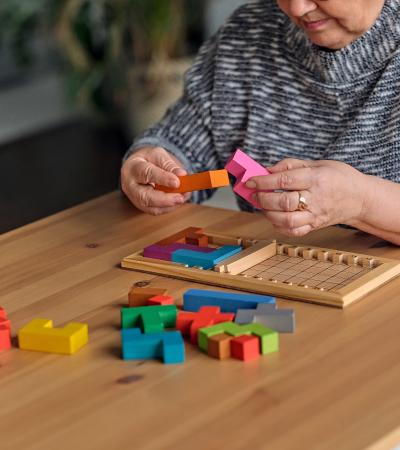Speed Friending is a casual event designed to connect international students and domestic students at CU Boulder. The event promotes cultural literacy and positions the library as a place for students to create lasting connections.
During the event, students spend five minutes getting to know each other before rotating to new partners. At the end of the hourlong exercise, participants are free to exchange contact information and to continue socializing over pizza and soda. This event is part of an ongoing Culture Bridge program series, and two additional events are planned for spring 2017.
Advanced Planning
The purpose of Speed Friending is to promote intercultural understanding and inclusivity in the library. The challenge is creating an environment where international students feel comfortable sharing and conversing with domestic students.
In April 2016, we learned that the International Library Cultural Exchange Interest Group of the Colorado Association of Libraries was sponsoring a grant that supported activities celebrating non-dominant cultures living in Colorado. We spent four weeks working on submission documents (due May 2016), and in June we received confirmation that CAL funding would be granted to the CU Libraries for implementation during the 2016-17 academic year. Planning began right away for four Speed Friending events, along with an International Talent Show and a photo contest. Grant team planning, promotion and outreach efforts continued throughout the fall 2016 semester and into the spring.
In the early stages of planning, the team contacted two Association of Research Libraries (ARL) members to get some tips and best practices from their experiences. One of these institutions sent us guidelines and a list of icebreaker questions to help students get acquainted at the event. We adapted the questions by coming up with a set of themes such as hobbies, sports, travel, food and so on, with two or three icebreakers under each. They included questions like "how many languages do you speak?" and "what is your hometown famous for?" On the day of the event, we attached these themes to alternating chairs for students to use as prompts. (See the list of full prompts under Attachments at right.)
Marketing
The grant team used email, social media and print marketing strategies that started with promotional fliers in international student orientation packets. (See the flier under Attachments at right.) The team also posted fliers in high-traffic student areas, emailed international student groups and other university partners, and designed a webpage to display event details and entry forms.
General promotion for the events began two to three months in advance, while more targeted efforts (such as Facebook boosts) started four weeks before the programs took place.
According to a Qualtrics survey of responses from 21 attendees, 39 percent of students heard about Speed Friending via social media, 28 percent via a flier or poster, and 22 percent by email.
Budgeting
As part of a larger grant ($1,500), the two fall Speed Friending events cost approximately $230, or $130 per event. Although it’s possible to cut costs by eliminating pizza or refreshments, based on feedback from attendees, incentives are highly encouraged.
Day-of-event Activity
Three of the five CU branch libraries were involved in hosting the Speed Friending events during 2016. On the day of each event, grant team members rearranged furniture, posted program signage and ordered pizza for delivery at the start of the event. Soda was purchased in advance and snack and library swag (pens, notepads and water bottles) were arranged on service tables.
Students began checking in at 1 p.m., and by 1:30 the event was under way. Each Speed Friending event lasted from 1:30 to 2:30 p.m. with a five-minute break.
For the first event, students were signaled to switch to new partners by a team member's announcements. The team set a proposed time of five minutes for one-on-one interactions. However, according to cues informed by the flow of contact and conversation, we extended the time limit to eight minutes and allowed the students to comfortably converse.
Based on observations and feedback from our first event, during the second event students were able to interact freely for the hour.
Program Execution
Nineteen students attended the first event, and 22 attended the second. According to our entry forms, 23 students attended both Speed Friending events along with 18 walk-ins (apparently enticed by the pizza and drinks).
Overall, Speed Friending was a success. According to our Qualtrics follow-up survey of 21 attendees, 76 percent admitted to making friends during the event. Several students wished the event had been longer. The majority of domestic students reported that Speed Friending either makes it more "comfortable” or more “exciting” to meet people from different disciplines and different countries.
Advice
During planning, consider the timing of the events. In order to increase attendance, survey students to determine where best to reach them (over social media, organized events, coffee hours, etc). Utilize subject specialists and other liaisons to help with promotion and structure the event with an icebreaker, music or both.
Supporting Materials
- Feedback (Coming Soon!)
- Programming Librarian Facebook Group




